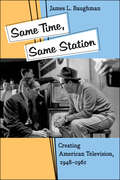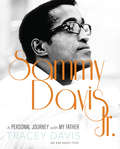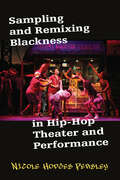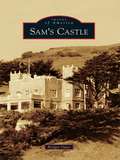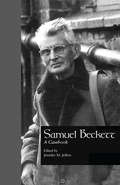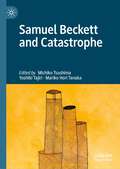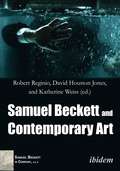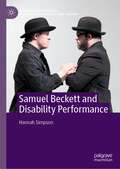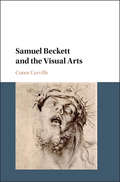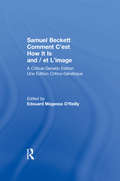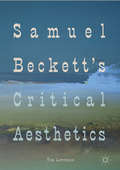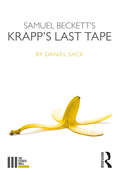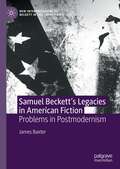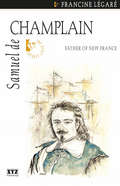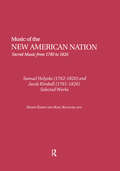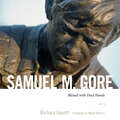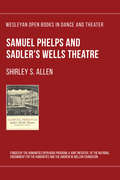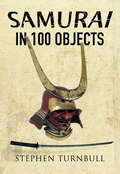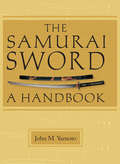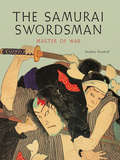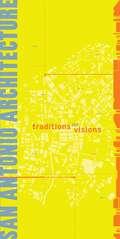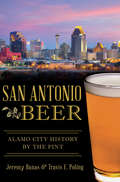- Table View
- List View
Same Time, Same Station: Creating American Television, 1948–1961
by James L. BaughmanOutstanding Academic Title for 2007, Choice MagazineEver wonder how American television came to be the much-derided, advertising-heavy home to reality programming, formulaic situation comedies, hapless men, and buxom, scantily clad women? Could it have been something different, focusing instead on culture, theater, and performing arts?In Same Time, Same Station, historian James L. Baughman takes readers behind the scenes of early broadcasting, examining corporate machinations that determined the future of television. Split into two camps—those who thought TV could meet and possibly raise the expectations of wealthier, better-educated post-war consumers and those who believed success meant mimicking the products of movie houses and radio—decision makers fought a battle of ideas that peaked in the 1950s, just as TV became a central facet of daily life for most Americans.Baughman’s engagingly written account of the brief but contentious debate shows how the inner workings and outward actions of the major networks, advertisers, producers, writers, and entertainers ultimately made TV the primary forum for entertainment and information. The tale of television's founding years reveals a series of decisions that favored commercial success over cultural aspiration.
Sammy Davis Jr.: A Personal Journey with My Father
by Tracey Davis Nina Bunche PierceNicknamed Mr. Show Business, Sammy Davis Jr. was a consummate performer who sang, danced, and acted on film, television, radio, and the stage for over six decades.<P><P> In this uniquely intimate volume, the entertainment legendOCOs story comes to life through rare family photos and a compelling narrative based on conversations between Sammy Davis Jr. and his daughter, Tracey Davis. The story of a future superstar unfolds beginning with his bittersweet childhood days, raised primarily by his grandmother in Harlem. On the stage by age three, he first became a star in vaudeville with the Will Mastin Trio. Davis was already an up-and-coming performer by the time he was recruited into the Army during World War II. As Tracey Davis candidly relates, it was there that her father first learned to use his talent?singing and dancing?as a weapon against racial bigotry. DavisOCOs career took off in the 1940s through his sheer determination, talent, and the support of friends like Frank Sinatra. With tenderness and humor Tracey describes her fatherOCOs friendship with Sinatra, and how he stood by him when Davis married TraceyOCOs Swedish actress mother. In a time when interracial marriages were forbidden by law in thirty-one states, both bride and groom endured an onslaught of negative press and even death threats. Complete with rare personal and professional photos, "Sammy Davis Jr. " recounts DavisOCOs adventures through the Rat Pack era, and the extraordinary obstacles he overcame to become a 5OCO6OCO, 120-pound legend who across six decades packed in more than forty albums, seven Broadway shows, twenty-three films, and countless nightclub and concert performances. What emerges from the pages of this loving, but utterly frankly written book, is a uniquely personal perspective on one of the greatest pop culture icons of the twentieth century. "
Sampling and Remixing Blackness in Hip-hop Theater and Performance
by Nicole Hodges PersleySampling and Remixing Blackness is a timely and accessible book that examines the social ramifications of cultural borrowing and personal adaptation of Hip-hop culture by non-Black and non-African American Black artists in theater and performance. In a cultural moment where Hip-hop theater hits such as Hamilton offer glimpses of Black popular culture to non-Black people through musical soundtracks, GIFs, popular Hip-hop music, language, clothing, singing styles and embodied performance, people around the world are adopting a Blackness that is at once connected to African American culture--and assumed and shed by artists and consumers as they please. As Black people around the world live a racial identity that is not shed, in a cultural moment of social unrest against anti-blackness, this book asks how such engagements with Hip-hop in performance can be both dangerous and a space for finding cultural allies. Featuring the work of some of the visionaries of Hip-hop theater including Lin-Manuel Miranda, Sarah Jones and Danny Hoch, this book explores the work of groundbreaking Hip-hop theater and performance artists who have engaged Hip-hop's Blackness through popular performance. The book challenges how we understand the performance of race, Hip-hop and Blackness in the age of Instagram, TikTok and Facebook. In a cultural moment where racial identity is performed through Hip-hop culture's resistance to the status quo and complicity in maintaining it, Hodges Persley asks us to consider who has the right to claim Hip-hop's blackness when blackness itself is a complicated mixtape that offers both consent and resistance to transgressive and inspiring acts of performance.
Sam's Castle (Images of America)
by Bridget OatesWith romance, elegant parties, and dashing, uniformed gentlemen, this charming castle story is almost what one might expect. But add in dramatic police raids and rumors of bodies buried in the garden, and it becomes the very unique tale of Sam's Castle. Built in 1908 as a haven for the earthquake-rattled Henry Harrison McCloskey (grandfather of former congressman Pete McCloskey), the castle served as a home, speakeasy, rum-runner signaling station, abortion clinic, and U.S. Coast Guard lookout during World War II. Despite its turbulent history, however, this castle story has a happy ending. In the care of the Sam Mazza Foundation, the magnificent estate will remain a treasured Pacifica landmark for all to enjoy.
Samuel Beckett: A Casebook (Casebooks On Modern Dramatists Ser. #25)
by Jennifer M. JeffersFirst published in 1998. Routledge is an imprint of Taylor & Francis, an informa company.
Samuel Beckett and Catastrophe
by Mariko Hori Tanaka Yoshiki Tajiri Michiko TsushimaSamuel Beckett and Catastrophe is a groundbreaking collection of original essays that explore the relation between Samuel Beckett and catastrophe in terms of war, the Holocaust, nuclear disasters and ecological crisis. Responding to the post-catastrophic situations in the twentieth century, Beckett created characters who often seem to have been through an unknown catastrophe. Although the importance of catastrophe in Beckett has been noted sporadically, there has been no substantial attempt to discuss his aesthetics and work in relation to it. This collection will therefore serve as the first sustained study to explore the theme of catastrophe in Beckett and will be a highly significant contribution to Beckett studies.
Samuel Beckett and Contemporary Art (Samuel Beckett in Company #2)
by Rober Regionio David Houston Jones Katherine WeissThis groundbreaking collection from scholars and artists on the legacy of Beckett in contemporary art provides readers with a unique view of this important writer for page, stage, and screen. The volume argues that Beckett is more than an influence on contemporary art—he is, in fact, a contemporary artist, working alongside artists across disciplines in the 1960s, 1970s, and beyond.The volume explores Beckett's formal experiments in drama, prose, and other media as contemporary, parallel revisions of modernism's theoretical presuppositions congruent with trends like minimalism and conceptual art. Containing interviews with and pieces by working artists, alongside contributions of scholars of literature and the visual arts, this collection offers an essential reassessment of Beckett's work. Perceiving Beckett's ongoing importance from the perspective of contemporary art practices, dominated by installation and conceptual strategies, it offers a completely new frame through which to read perennial Beckettian themes of impotence, failure, and penury. From Beckett's remains, as it were, contemporary artists find endless inspiration.
Samuel Beckett and Disability Performance (New Interpretations of Beckett in the Twenty-First Century)
by Hannah SimpsonBeckett’s plays have attracted a striking range of disability performances – that is, performances that cast disabled actors, regardless of whether their roles are explicitly described as ‘disabled’ in the text. Grounded in the history of disability performance of Beckett’s work and a new theorising of Beckett’s treatment of the impaired body, Samuel Beckett and Disability Performance examines four contemporary disability performances of Beckett’s plays, staged in the UK and US, and brings the rich fields of Beckett studies and disability studies into mutually illuminating conversation. Pairing original interviews with the actors and directors involved in these productions alongside critical analysis underpinned by recent disability and performance theory, this book explores how these productions emphasise or rework previously undetected indicators of disability in Beckett’s work. More broadly, it reveals how Beckett’s theatre compulsively interrogates alternative embodiments, unexpected forms of agency, and the extraordinary social interdependency of the human body.
Samuel Beckett and the Visual Arts
by Conor CarvilleSamuel Beckett and the Visual Arts is the first book to comprehensively assess Beckett's knowledge of art, art history and art criticism. In his lifetime Beckett thought deeply about visual culture from ancient Egyptian statuary to Dutch realism, from Quattrocento painting to the modernists and after. <P><P>Drawing on a wide range of published and unpublished sources, this book traces in forensic detail the development of Beckett's understanding of painting in particular, as that understanding developed from the late 1920s to the 1970s. In doing so it demonstrates that Beckett's thinking about art and aesthetics radically changes in the course of his life, often directly responding to the intellectual and historical contexts in which he found himself. Moving fluently between art history, philosophy, literary analysis and historical context, Samuel Beckett and the Visual Arts rethinks the trajectory of Beckett's career, and reorients his relationship to modernism, late modernism and the avant-gardes.<P> Draws on a wide range of new sources, both published and unpublished.<P> Demonstrates the changes in Beckett's thinking about art and aesthetics over his career.<P> Reorients Beckett's relationships with modernism, late modernism and the avant-gardes.
Samuel Beckett Comment C'est How It Is And / et L'image: A Critical-Genetic Edition Une Edition Critic-Genetique
by Samuel BeckettThis book contains the English and French texts and a complete record of the genesis of each. Besides Comment C'est How It Is, O'Reilly has included L'Image and an excerpt from Comment C'est that was published later in another volume.
Samuel Beckett's Critical Aesthetics
by Tim LawrenceThis book considers how Samuel Beckett’s critical essays, dialogues and reflections drew together longstanding philosophical discourses about the nature of representation, and fostered crucial, yet overlooked, connections between these discourses and his fiction and poetry. It also pays attention to Beckett’s writing for little-magazines in France from the 1930s to the 1950s, before going on to consider how the style of Beckett’s late prose recalls and develops figures and themes in his critical writing. By providing a long-overdue assessment of Beckett’s work as a critic, this study shows how Beckett developed a new aesthetic in knowing dialogue with ideas including phenomenology, Kandinsky’s theories of abstraction, and avant-garde movements such as Surrealism. This book will be illuminating for students and researchers interested not just in Beckett, but in literary modernism, the avant-garde, European visual culture and philosophy.
Samuel Beckett's Krapp's Last Tape (The Fourth Wall)
by Daniel Sack"We lay there without moving. But under us all moved, and moved us." - Krapp Samuel Beckett’s most accessible play is also one of the twentieth century’s most moving dramas about aging, memory, and disappointment. Daniel Sack offers the first comprehensive survey of Krapp’s Last Tape (1958) with a general reader in mind. Structured around a series of questions, five approachable sections contextualize the play in the larger career of its Nobel-Prize-winning writer, explore its major thematic concerns, and offer comparative analyses with Beckett’s other signal works. Sack also uses discussions of significant productions, including those directed by the playwright himself, to ground interpretation of the play in terms of its performance and provide a useful resource to directors and actors. Both a critical and personal exploration of this haunting play, this volume is a must-read for anyone with an interest in Beckett’s work.
Samuel Beckett’s Legacies in American Fiction: Problems in Postmodernism (New Interpretations of Beckett in the Twenty-First Century)
by James BaxterSamuel Beckett’s Legacies in American Fiction provides an overdue investigation into Beckett’s rich influences over American writing. Through in-depth readings of postmodern authors such as Robert Coover, Donald Barthelme, Thomas Pynchon, Don DeLillo, Paul Auster and Lydia Davis, this book situates Beckett’s post-war writing of exhaustion and generation in relation to the emergence of an explosive American avant-garde. In turn, this study provides a valuable insight into the practical realities of Beckett’s dissemination in America, following the author’s long-standing relationship with the countercultural magazine Evergreen Review and its dramatic role in redrawing the possibilities of American culture in the 1960s. While Beckett would be largely removed from his American context, this book follows his vigorous, albeit sometimes awkward, reception alongside the authors and institutions central to shaping his legacies in 20th and 21st century America.
Samuel de Champlain
by Francine Legaré Jonathan KaplanskyA navigator and cartographer, Samuel de Champlain’s passion was for America, which he struggled to explore and have recognized. He still dreamed of reaching India, with its spices and its many riches, by continuing further to the West. But the land called New France – a harsh land from India – was his greatest love. He defended it fiercely to those in power in France and was responsible for its development. Champlain thus ensured the birth of the country that today is Canada. He is undisputedly the Father of New France.
Samuel Holyoke: Selected Works (Music of the New American Nation: Sacred Music from 1780 to 1820 #12)
by Harry EskewThis series presents the music of early American composers of sacred music・psalmody, as it was called・in collected critical editions. Each volume has been prepared by a scholar who has studied the musical history of the period and the stylistic qualities of the composer. The purpose of the series is to present the music of important early American composers in accurate editions for both performance and study. This volume presents representative compositions by two American psalmodists, Samuel Holyoke and Jacob Kimball, who were actively engaged in the reform of American psalmody during the 1790s and early 1800s. American compositions were often criticized for two features: their failure to conform to the harmonic norms of European art music and their often vigorous, animated musical style, which was sometimes considered lacking in a reverent spirit appropriate for use in public worship
Samuel M. Gore: Blessed with Tired Hands
by Barbara GaunttBorn in Coolidge, Texas, Samuel Marshall Gore was the sixth of ten children born to a Baptist preacher and a mother described as “an angel.” From early childhood, Samuel Gore remembers enjoying making things, and gives credit to his mother and grandmother for his interest in art. Gore went on to be an art teacher and professor for more than fifty years, mostly at Mississippi College in Clinton, Mississippi. He has shown work in exhibitions and galleries for more than forty years. In 2012 the Mississippi Institute of Arts and Letters honored him with its Lifetime Achievement Award. In the first part of this volume, Barbara Gauntt traces how a concept in the mind of the artist comes to execution. Gore uses sketches on scraps of paper to inform studies in clay, as the piece Christ, Fulfillment of the Law begins to take its inspired shape. The project, expected to take about a year, lasts nearly two as Gore works to capture the constantly changing image forming in his mind. The 12' x 8' bronze, bas relief sculpture, a sister piece to Moses, Deliverer of the Law commissioned for the Mississippi College School of Law, moves from a small work area in the sculptor’s home to a shop on his property. There he builds the full-size piece on an armature of wood, foam board, and netting covered with clay. From chaos arises the beauty of detailed faces and a work of art that tells a story. The second section of the book covers the artist’s career from the late 1940s into the twenty-first century. Superb photographs of both two- and three-dimensional pieces show the artist’s diverse style and talent. Gore says that he “want[s] people to put their hands on [his] sculpture” because that is how he experiences his art. Gore sees no end in sight to his work. Moses started preaching at the age of eighty, so Gore figures that he is just getting started. This volume features detailed information about all of the artwork included; an interview with Samuel Gore in which the artist discusses his career, technique, and philosophy; a timeline of his life and career; and a foreword by noted Mississippi artist and former student, Wyatt Waters.
Samuel Phelps and Sadler's Wells Theatre
by Shirley S. AllenThis is the definitive biography of the actor Samuel Phelps (1804-1878) who brought the Shakespeare’s original plays back to the forefront of theatre after over 100 years of derived versions, and revolutionized theater design in the 20th Century. In an era when performances of Shakespeare’s works had been replaced with derived versions of themselves, Phelps became known for his exquisite productions of Shakespeare that were faithful to their original versions. Phelps revolutionized Shakespearean theatre when he took over management of Sadler’s Wells Theatre. As manager and director, he brought to each production—whether of Shakespeare or of Restoration or contemporary pieces—his own total concept, in which acting, setting, and staging were integrated under his supervision to produce fresh, striking effects. He preserved the best of the traditional past; he pioneered in directions the theatre would follow for decades afterward. This carefully researched and fluently written book covers the full range of Phelps’s half-century career, with special emphasis on his fruitful decades at Sadler’s Wells and on his work as performer and producer of Shakespearian drama. Scholar Shirley S. Allen presents the background against which Phelps worked: the theatrical monopoly, traditional techniques of acting, the repertory system, the advent of melodrama, and the social milieu. She also examines Phelps’s important contemporaries in the theatre—Macready, Charles Kean, Ben Webster, Mrs. Warner, and more—especially as their careers were intertwined with his. This book, first published in 1971, is widely considered the definitive work on Phelps and adds substantially to our understanding of the London stage and of Victorian England.
Samurai in 100 Objects: The Fascinating World of the Samurai as Seen Through Arms and Armour, Places and Images (In 100 Objects Ser.)
by Stephen TurnbullA journey through the world and culture of these elite Japanese warriors, filled with facts and photos. From lowly attendants (samurai literally means &“those who serve&”) to members one of the world&’s most powerful military organizations, the samurai underwent a progression of changes to reach a preeminent position in Japanese society and culture. Even their eventual eclipse did not diminish their image as elite warriors, and they would live on in stories and films. This proud and enduring tradition is exemplified and explored by the carefully selected objects gathered here from Japanese locations and from museums around the world. These objects tell the story of the samurai, from acting as the frontier guards for the early emperors to being the inspiration for the kamikaze pilots. The artifacts, many of which are seen here for the first time, include castles, memorial statues, and paintings and prints associated with the rise of the samurai, along with their famous armor and weapons. The latter include the Japanese longbow, a thirteenth-century bomb, and the famous samurai sword—but not every artifact here is from the past. You&’ll also discover a cute little blue duck—found in a Japanese souvenir shop—complete with helmet, spear, and surcoat, dressed authentically as the brutal samurai Kat Kiyomasa, who was responsible for a massacre at Hondo castle in 1589.
The Samurai Sword
by John M. YumotoThe samurai sword: a symbol of the spirit of old Japan, it embodies the samurai's steel discipline, unswerving devotion and peerless skill. With its creation, a feat of craftsmanship passed down by generations of artisans, the samurai sword is generally considered to be superior even to the famed blades of Western Damascus and Toledo. The Samurai Sword Handbook is a precise exploration of the samurai sword designed for sword collectors as well as anyone intrigued by these ancient blades. Detailing the origins and development of the samurai sword, its historical background, styles, famous schools and differences in construction, this revised edition of the classic reference outlines methods of identifying and researching the sword, as well as caring for it properly.
The Samurai Sword
by John M. YumotoThe samurai sword: a symbol of the spirit of old Japan, it embodies the samurai's steel discipline, unswerving devotion and peerless skill. With its creation, a feat of craftsmanship passed down by generations of artisans, the samurai sword is generally considered to be superior even to the famed blades of Western Damascus and Toledo. The Samurai Sword Handbook is a precise exploration of the samurai sword designed for sword collectors as well as anyone intrigued by these ancient blades. Detailing the origins and development of the samurai sword, its historical background, styles, famous schools and differences in construction, this revised edition of the classic reference outlines methods of identifying and researching the sword, as well as caring for it properly.
The Samurai Swordsman
by Stephen TurnbullThe word "samurai" evokes intense images of indomitable warriors, expert swordsmen capable of taking on overwhelming odds-and emerging victorious. But this popular image only brushes the surface of the samurai tradition. The Samurai Swordsman: Master of War brings to life the history behind the courageous and highly disciplined fighting men of early Japan.Authoritative military history expert Stephen Turnbull shows how the samurai evolved from the primitive fighters of the 7th century into an invincible military caste with a fearsome reputation. Many aspects of the samurai and their military significance are covered, including the cultural reasons why the elite mounted archers originally emerged in Japan; their wars against pirate invaders; how samurai masters taught the next generation; the women samurai and their accomplishments; and much more. Illustrated with full-color historical images that show the samurai tradition in fascinating detail, The Samurai Swordsman is an invaluable guide to an enduring legacy.
San Antonio Architecture
by San Antonio Boone PowellWith a history more than 290 years old, San Antonio boasts a diverse, eclectic, and important architectural inventory. From the Spanish Missions of the 17th century to invigorating adaptation and restoration of historic buildings alongside landmark new construction, there is a wide array of culturally significant assets reflecting Anglo and Hispanic traditions, alongside regional variations of southern and southwestern American styles.San Antonio Architecture is the comprehensive catalog of the architecture inventory of the city. Complete with color illustrations, keyed maps, and informative essays, it is a must-have book for every armchair and on foot architectural, art, and community historian.
San Antonio Architecture
by San Antonio Boone PowellWith a history more than 290 years old, San Antonio boasts a diverse, eclectic, and important architectural inventory. From the Spanish Missions of the 17th century to invigorating adaptation and restoration of historic buildings alongside landmark new construction, there is a wide array of culturally significant assets reflecting Anglo and Hispanic traditions, alongside regional variations of southern and southwestern American styles.San Antonio Architecture is the comprehensive catalog of the architecture inventory of the city. Complete with color illustrations, keyed maps, and informative essays, it is a must-have book for every armchair and on foot architectural, art, and community historian.
San Antonio Architecture
by Boone Powell San AntonioWith a history more than 290 years old, San Antonio boasts a diverse, eclectic, and important architectural inventory. From the Spanish Missions of the 17th century to invigorating adaptation and restoration of historic buildings alongside landmark new construction, there is a wide array of culturally significant assets reflecting Anglo and Hispanic traditions, alongside regional variations of southern and southwestern American styles.San Antonio Architecture is the comprehensive catalog of the architecture inventory of the city. Complete with color illustrations, keyed maps, and informative essays, it is a must-have book for every armchair and on foot architectural, art, and community historian.
San Antonio Beer: Alamo City History by the Pint (American Palate)
by Travis E. Poling Jeremy BanasBrewing history and beer culture permeate San Antonio. The Menger Hotel and its bar notoriously frequented by Teddy Roosevelt and his Rough Riders began as the city's first brewery in 1855. The establishment of San Antonio Brewing Association and Lone Star Brewery at the close of the nineteenth century began the city's golden age of brewing. Decades later, the Volstead Act decimated the city's brewing community. Only one brewery survived Prohibition. Those that bounced back were run out of business by imports coming in on the new railroad. The 1990s saw a craft comeback with the opening of the oldest existing brewpub, Blue Star Brewing Company. Today, San Antonio boasts a bevy of new breweries and celebrates its brewing heritage. Grab a pint and join authors Jeremy Banas and Travis E. Poling for a taste of Alamo City's hoppy history.
